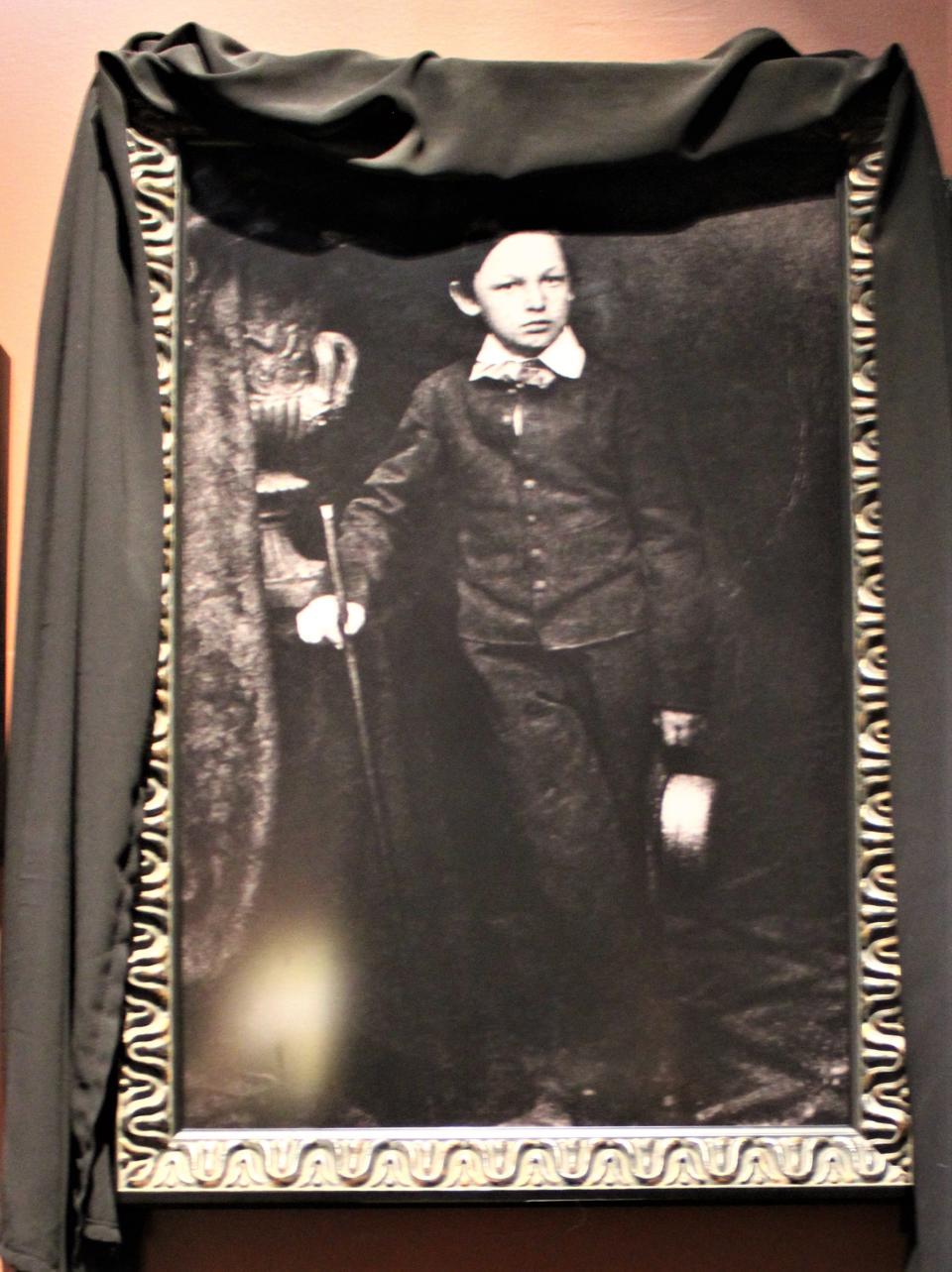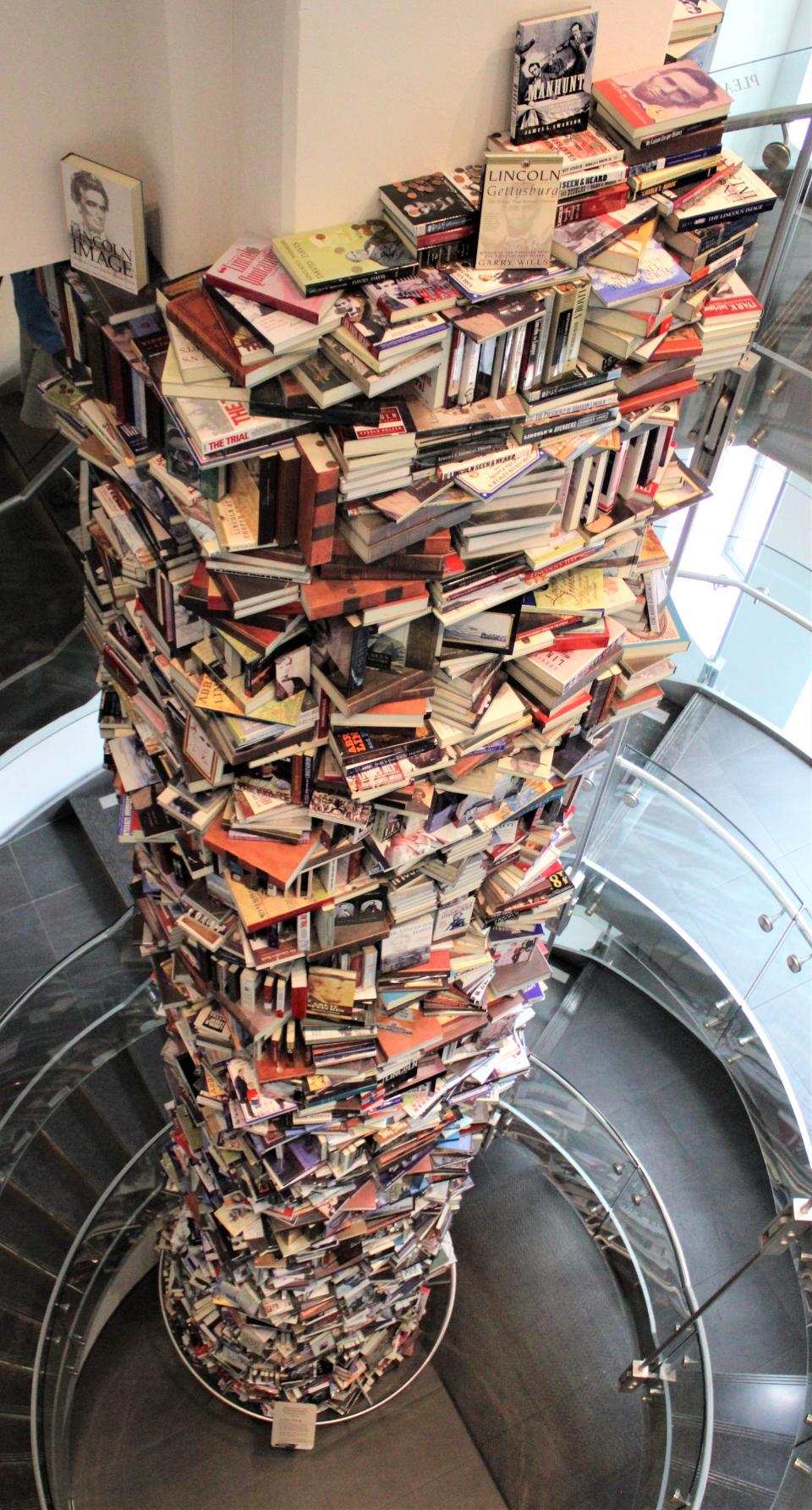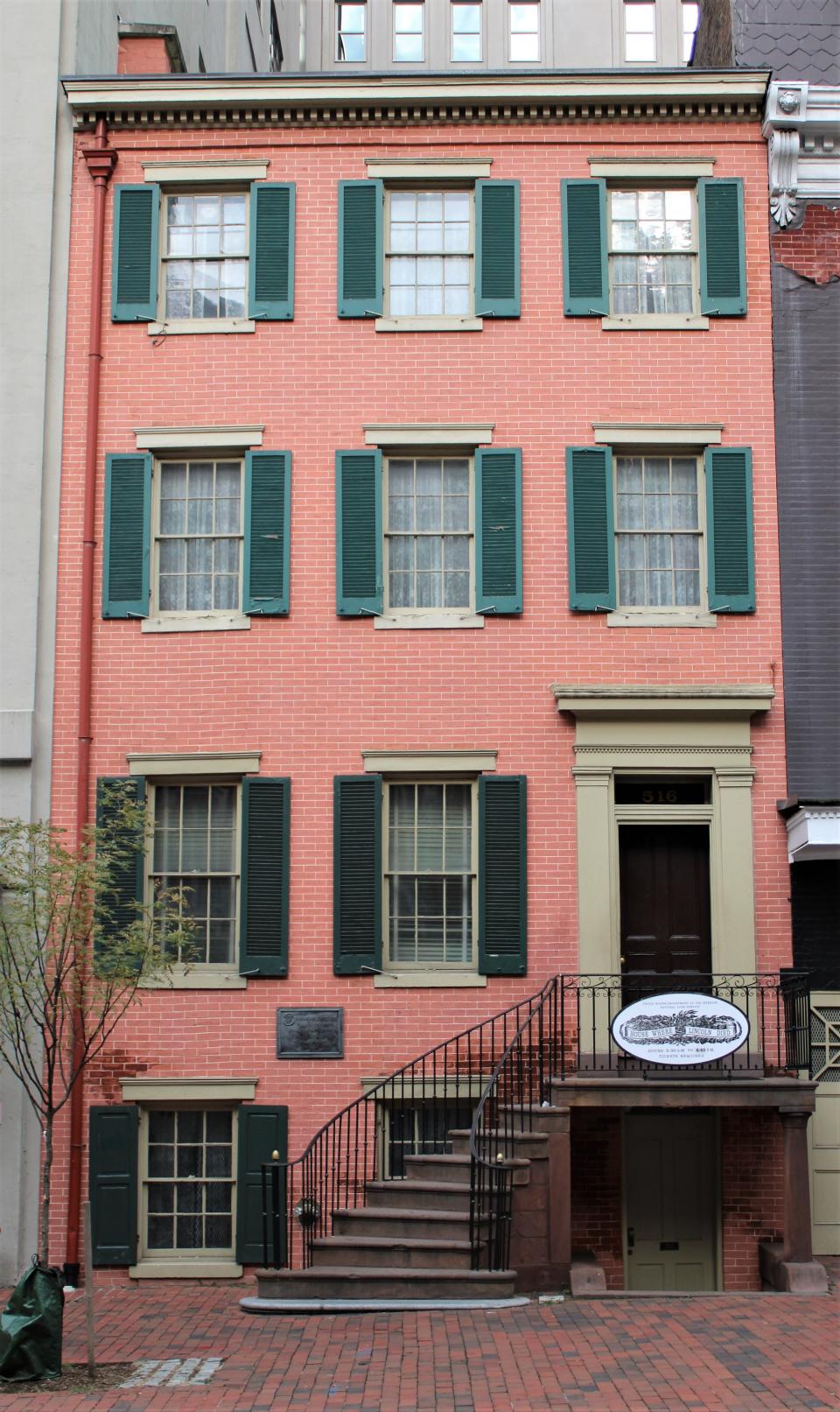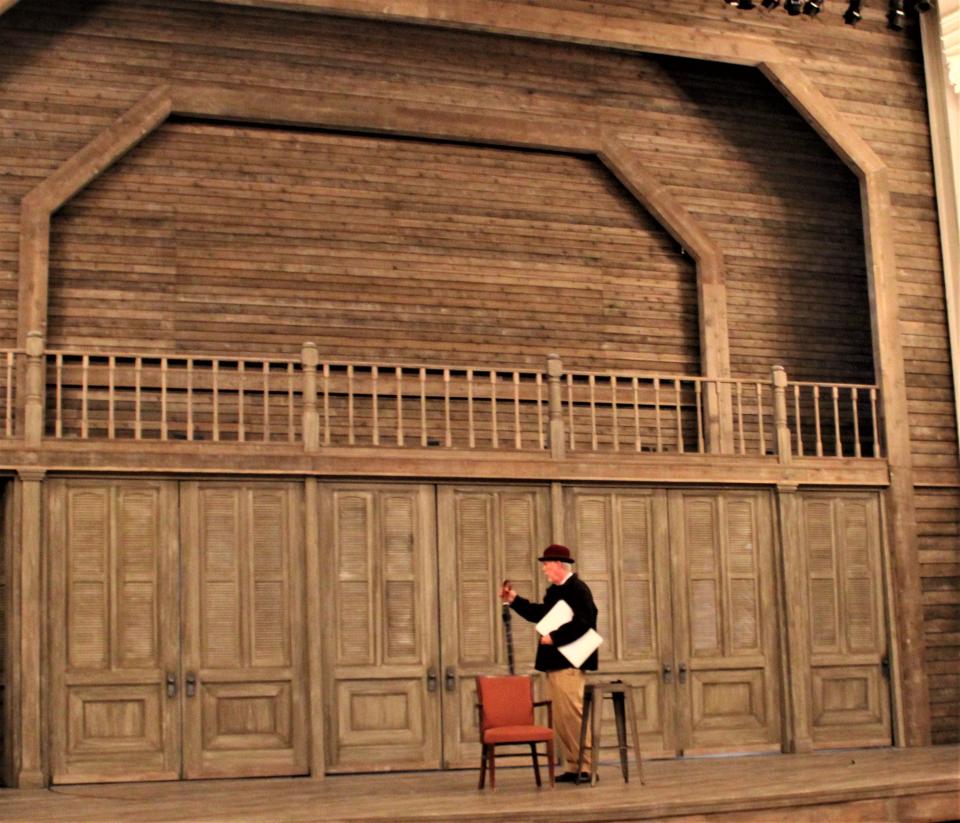Coming across Ford's Theater on accident: Beyer's Byways
- Oops!Something went wrong.Please try again later.
- Oops!Something went wrong.Please try again later.
- Oops!Something went wrong.Please try again later.
- Oops!Something went wrong.Please try again later.
In 1863, a young boy and his friend were thrilled to be watching the play, The Marble Heart, at Grover’s Theatre in Washington D.C. They found one of the main characters extremely believable while playing the role of the villain, Raphael.
So thrilled they were, between acts they snuck backstage and ventured into the actor’s dressing room.
Instead of being cross, the actor was very cordial, talkative, and upon leaving the dressing room gave each boy a rose.
The two boys then ran back to their seats to finish watching the play, astonished they had met such a famous actor.
Later that year, the actor they had met, John Wilkes Booth, would assassinate one of the boy’s fathers, President Abraham Lincoln.
Research indicated that Booth knew that one of the young boys was in fact Tad Lincoln, the President’s 11-year-old son.

Though Tad Lincoln would succumb to tuberculosis at the age of 18, he never forgot that the nice man he had met years earlier, would shatter his world, shock a nation, and be the focus of the largest manhunt in its history, past or present.
As Laureen, my lovely wife, wandered the streets of Washington D.C., we actually came upon Ford’s Theatre by accident.
There is so much history wrapped up in the 68 square miles that make up our nation's capital, it’s hard not to find a marker here or there marking the spot where an important event took place.
Placards, engravings, street signs, and all sorts of information abound in this city of over 700,000 inhabitants.
“We don’t even need a tourist map,” I said. “We just walk and there will be something important to see around the next corner.”
Laureen nodded. “Looks like it.”
As we turned the corner on 10th street, a large sign told us we were steps away from Ford’s Theatre, the location where President Abraham Lincoln and his wife, Mary Todd Lincoln, sat in the president’s private box while enjoying the play, Our American Cousin. Unbeknownst to them, a man by the name of John Wilkes Booth would change the course of history before the final act.

We arrived at the theater just as the doors opened. Tour tickets were being handed out by the United States National Parks Service and we were second in line.
“You’re in luck,” the Ranger told us. “The line is usually a lot longer by this time.”
As he finished the comment, two tour buses with a gazillion visitors disembarked.
“He called me, Mr. Lucky,” I said.
A roll of the eyes, a brush past me and soon we were being handed tickets for the theater tour which would be starting in less than a half hour.
The tickets are free. I was Mr. Lucky that morning on all counts, until Laureen spied the theater’s gift shop.
“We have some time to burn,” she said.
This theater, the one that held so many wonderfully fulfilling evenings of laughter coming from audiences from all around the Washington D.C. area for years, ended up being one of the saddest locations for the entire country on April 14, 1865.

The country had been divided for four years during the Civil War, where over 750,000 Americans died.
It did not matter if a dead soldier were a Northerner or Southerner, all were Americans.
A terrible and tragic bloodstained moment in the history of the United States.
But Lincoln was in a good mood on that evening. The end of the war had only been five days prior, and the president believed the country could move ahead as one and end up being stronger in the future.
Both sides seemed ready for peace. There had been enough death to last many lifetimes.
It was time to move on.
The theater has a unique and interesting history. It started out in 1834 on 10th Street as the First Baptist Church, whose founders believed that a location this close to the White House, a mere mile away, could be a good location for the locals living and doing business in the nation’s capital.
But in 1859, the church had grown. The church, then actually two churches, the First and Fourth Baptist, joined together and moved to 13th Street.
No information on what happened to the Second and Third Baptist Churches during this time period.
The large property stood vacant, except for the occasional concert held there from time to time.
Then in December of 1861, John T. Ford leased the building with plans to open a theater. The city was growing, and he believed folks would flock to a place to get away from reality for a few hours and enjoy plays and the like.
The venue was a success until it burned down in December of 1862.
With the war now raging, Ford knew he had to rebuild. He believed that more than ever, people needed a place to escape the chaos that had overtaken the country.
Not only did he rebuild, but he made it larger and more ornate.
The interior is beautiful.
Large overhead chandeliers light up everything in a heavenly glow. Intricately carved banisters lead theatergoers to the upper galleries. Each level is architecturally designed, affording every patron the opportunity to view the stage unobstructed. Lush red carpets and plush seats only add to the richness of the theater.
Ford spared no expense, and it paid off. All the best-known actors would come and perform on his stage.
That included John Wilkes Booth, whom the Lincoln’s had seen in various plays and thoroughly enjoyed his acting skills.
But Wilke’s was not scheduled to be on stage the evening he shot President Lincoln.

Since he was so well-known in the acting world, his presence was not questioned as he wandered the theater during that evening’s performance.
No, he was there to kill the man he believed ruined the South.
Laureen and I sat near the front of the stage where a Parks Service Ranger was about to give a lecture.
The ranger portrayed himself as Osborn H.I. Oldroyd, who had started collecting mementos about President Lincoln in 1860 and continued until 1925 when he sold his nearly 3,000 Lincoln related artifacts to the government
“I admired President Lincoln,” the Oldroyd character said. “After his murder, I was determined to travel all the steps he did and collect as many items related to his life as I could.”
Later, this collection from this admirer would be a large basis of what can be seen in the museum today.
The Ranger kept us spellbound for nearly 45 minutes, and when he finished, we wished he hadn’t. His performance was riveting.
One thing we learned was the almost surrealistic connection between the Lincolns and Booths.
Edwin Booth, a much more famous actor than his younger brother, John, was devastated by the murder of President Lincoln at the hands of his brother. He was a supporter of the president and believed Abraham Lincoln would have brought the country together quickly with his vision for reunification and reconstruction.
In fact, Edwin had performed in front of the Lincolns and received their applause and appreciation. He, in turn, showered them with praise and smiles.
The paths of the Lincolns and the Booths crossed many times.
Located across the street from the theater is the Petersen Boarding House. It was here that the president taken after being shot by John Wilkes Booth.
Lincoln died in the same bed Booth had slept in only a month earlier.
And Edwin Booth, during either 1863 or 1864, had actually rescued Robert Todd Lincoln when Robert fell off a railroad platform and was nearly run over by the train by lifting him back to the platform. Neither man knew each other.
And of course, Tad Lincoln had received a rose from John Wilkes Booth.
It dawned on me that Washington D.C. in the 1860s was truly a small town of only 65,000, and it made sense that certain people would bump into one another at given events. But it is still uncanny how some bumps can turn into major turning points for the world.
The museum is a place worth spending an hour or more. There are so many items relating to the time Lincoln served in Washington D.C. and before.
Personal letters. Mementos from friends and family given to or received from President Lincoln. Copies of his most famous speeches, as well as early photographs of him with family, friends, and soldiers during the Civil War. And that is just the beginning.
Ford’s Theater continues to hold live performances, all year round.
In fact, almost every president since Lincoln has come to the theater and watched actors dancing, prancing, singing, and entertaining guests. They, of course, do not sit in the private box in which President Lincoln sat on that fateful night. No, they have a center row front row seat to view all the action going on in front of them.
We left the theater knowing Ford’s Theater is a must visit.
For more information: https://fords.org/visit-us/
John can be reached at; beyersbyways@gmail.com
This article originally appeared on Visalia Times-Delta: Coming across Ford's Theater on accident: Beyer's Byways

